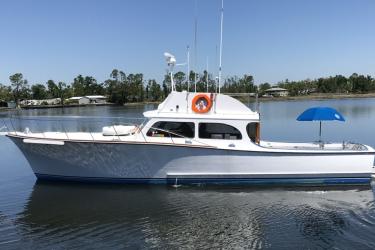NOAA has identified the most immediate actions necessary to achieve the goals of Mission: Iconic Reefs. The initiative is a first-of-its-kind effort to restore seven coral reef sites in the Florida Keys National Marine Sanctuary. Mission: Iconic Reefs 2022–2025 Priorities (PDF, 2 pages) provides guidance on these highest priority actions.
NOAA and partners launched Mission: Iconic Reefs in December 2019. The effort is being implemented using a phased approach over the next two decades. Since launch, we’ve made substantial progress building the foundation and supporting the long-term work of this ambitious effort.
Immediate Strategic Action
The document provides guidance on immediate strategic actions needed to continue our progress.
Restoration Implementation
- Achieve at least 75 percent of Phase 1A coral restoration outplanting goals across all habitat types
- Implement restoration of grazer species, such as Caribbean king crab and long-spined sea urchin, that control invasive algae that can overgrow coral reefs
- Develop a detailed genetic management plan for all Phase 1 species, including elkhorn, staghorn, star, brain, and pillar corals
- Research and develop propagation and restoration techniques of Phase 1B species, in preparation for outplanting those species
- Develop and implement a risk management plan that enables coordinated and intentional responses and mitigations to risks that may arise over the duration of Mission: Iconic Reefs
- Develop Mission: Iconic Reefs restoration best management practices and support partners in the implementation and maintenance of those practices
- Build organizational capacity that enables continued, sustainable restoration at large scale by supporting:
- In- and ex-situ nursery infrastructure
- Technology and data management infrastructure
- Restoration management personnel
- Streamline permitting and reporting processes
Monitoring and Research
- Equip the Mission: Iconic Reefs field team to engage in monitoring activities at all sites
- Acquire reef-scale imagery at all sites to serve as baselines for future comparison
- Develop and implement a data management plan that enables full security of completed restoration monitoring data and a platform which increases knowledge sharing in the international restoration community
Stewardship
- Develop the Iconic Reef Guardians Program into an active and functional program that assists with site preparation, maintenance, and monitoring activities
- Develop an updated framework for volunteer engagement that enables local community members to regularly engage in restoration-related activities
Marketing and Communications
- Build and maintain a robust Mission: Iconic Reefs website, social media, and related content, that enables international knowledge sharing for all related subject areas and achievements
The effort to put Florida Keys coral reefs on track for recovery is an enormous undertaking, requiring long-term collaboration among and contributions from many partners. Our partners are crucial to achieving meaningful conservation of these iconic resources. Implementing these priority actions will help us make collective progress toward restoring these seven coral reefs in the Florida Keys.





